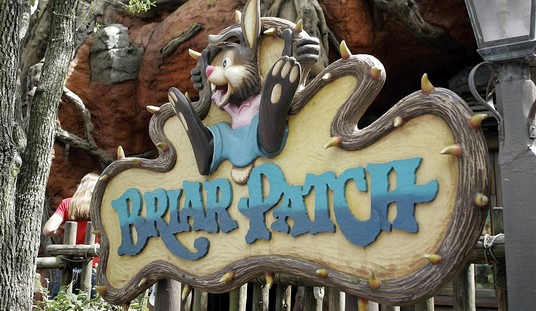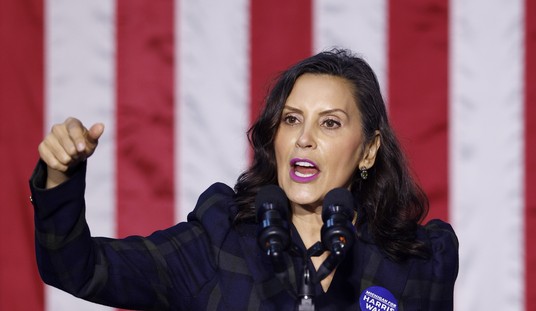If we expect another pivot from the White House, don’t expect it to be on the economy. The first quarter of 2014 turned into a turkey that barely avoided a decline, with annualized GDP growth coming it at a mere 0.1% in the advance estimate from the Bureau of Economic Analysis:
Real gross domestic product — the output of goods and services produced by labor and property
located in the United States — increased at an annual rate of 0.1 percent in the first quarter (that is, from the fourth quarter of 2013 to the first quarter of 2014), according to the “advance” estimate released by the Bureau of Economic Analysis. In the fourth quarter, real GDP increased 2.6 percent.The Bureau emphasized that the first-quarter advance estimate released today is based on source
data that are incomplete or subject to further revision by the source agency (see the box on page 3 and “Comparisons of Revisions to GDP” on page 5). The “second” estimate for the first quarter, based on more complete data, will be released on May 29, 2014.The increase in real GDP in the first quarter primarily reflected a positive contribution from
personal consumption expenditures (PCE) that was partly offset by negative contributions from exports, private inventory investment, nonresidential fixed investment, residential fixed investment, and state and local government spending. Imports, which are a subtraction in the calculation of GDP, decreased.
There was a bright light of hope — well, not bright, but more of a spot of slightly-brighter murk — in the real final sales numbers. That increased a meager 0.7%, still a bad number, but an indication that some of the problem may have been in inventory management. Even the relatively-good numbers came with a caveat. For instance, current-dollar personal income rose 3.5%, but that came primarily from government benefits, not actual income growth.
This will crowd out the slightly better news from ADP that shows 220,000 private-sector jobs were added to the economy in April. That’s the best number in six months, and it lands above the year-long rolling average for ADP as well. However, ADP usually comes in significantly higher than the BLS report, which is due on Friday. The GDP report is a better indication of whether businesses felt comfortable enough to add jobs, so expect to see a disconnect between ADP and BLS again this month.
The Wall Street Journal, among others, pointed to the harsh winter as one explanation for the steep drop in GDP growth. But the WSJ also notes that the slowdown extended into areas where weather shouldn’t have much of an impact:
The report offered the first official gauge of the economy’s output from January through March, months that were abnormally cold in much of the country. The weather likely slowed consumer spending on goods, which rose at a mere 0.4% pace during the quarter. But households spent more on sevices–including energy to heat their homes and health care–causing total consumer consumption to rise at a 3.0% pace, only slightly below the fourth quarter’s 3.3% rate.
However, business spending on items such as equipment, buildings and intellectual property fell at a 2.1% pace in the first three months of the year. That was the first decline in a year and reversed in part the 5.7% gain the prior period. The slowdown in investment coincided with weaker hiring during the quarter.
U.S. exports fell at a 7.6% pace in the fourth quarter. That was the largest drop since the recession ended. Declining exports show that shaky economies in Europe and Asian are generating weak demand for U.S. goods and services. Imports into the U.S. declined at a 1.4% pace, reflecting weaker consumer demand for foreign goods.
The latest numbers continue a familiar pattern. The nation’s economic recovery, which started in mid-2009, has been marked as much for its choppiness as its slow pace.
That’s because we keep treating economic symptoms rather than stagnation’s causes. We add regulation where we should be eliminating it, we offer short-term incentives that end up subsidizing normal behavior, and our tax and regulatory policies keep capital sidelined. The massive expansion of hiring costs have employers looking to pare down, so consumers have less money to spend and less reason to take their own risks.
Sam Ro at Business Insider sees a glimmer of optimism:
However, personal consumption grew by 3.0%, which was better than the 2.0% expected. This contributed to 2 percentage points of growth in GDP. …
“The deceleration in real GDP growth in the first quarter primarily reflected downturns in exports and in nonresidential fixed investment, a larger decrease in private inventory investment, a deceleration in PCE, and a downturn in state and local government spending that were partly offset by an upturn in federal government spending and a downturn in imports,” said the BEA.
The inventory adjustment cuts both ways. It does mean that the GDP drop may not have been quite as bad as it looks, but it also means that businesses aren’t terribly optimistic about the near future, either.








Join the conversation as a VIP Member